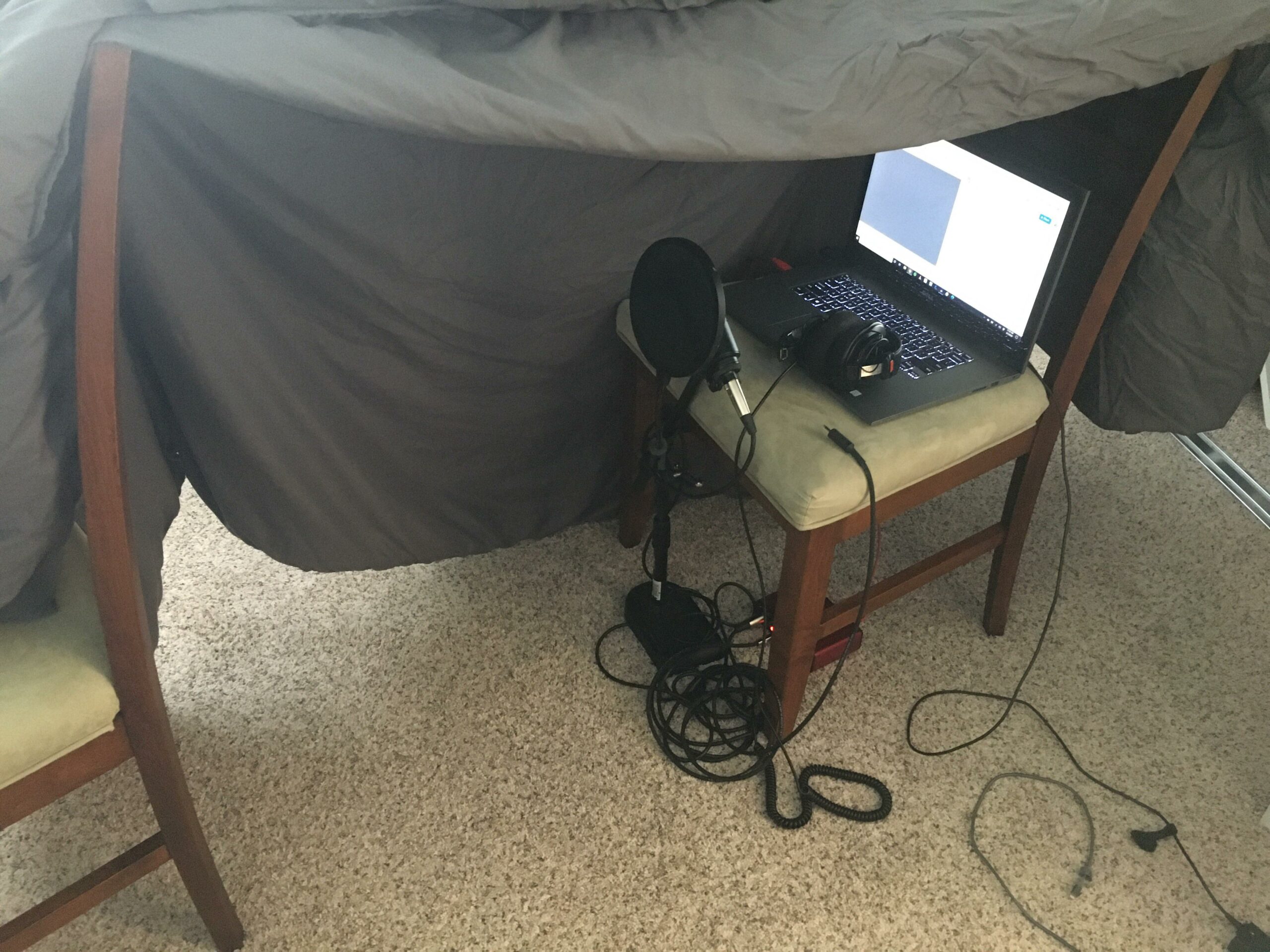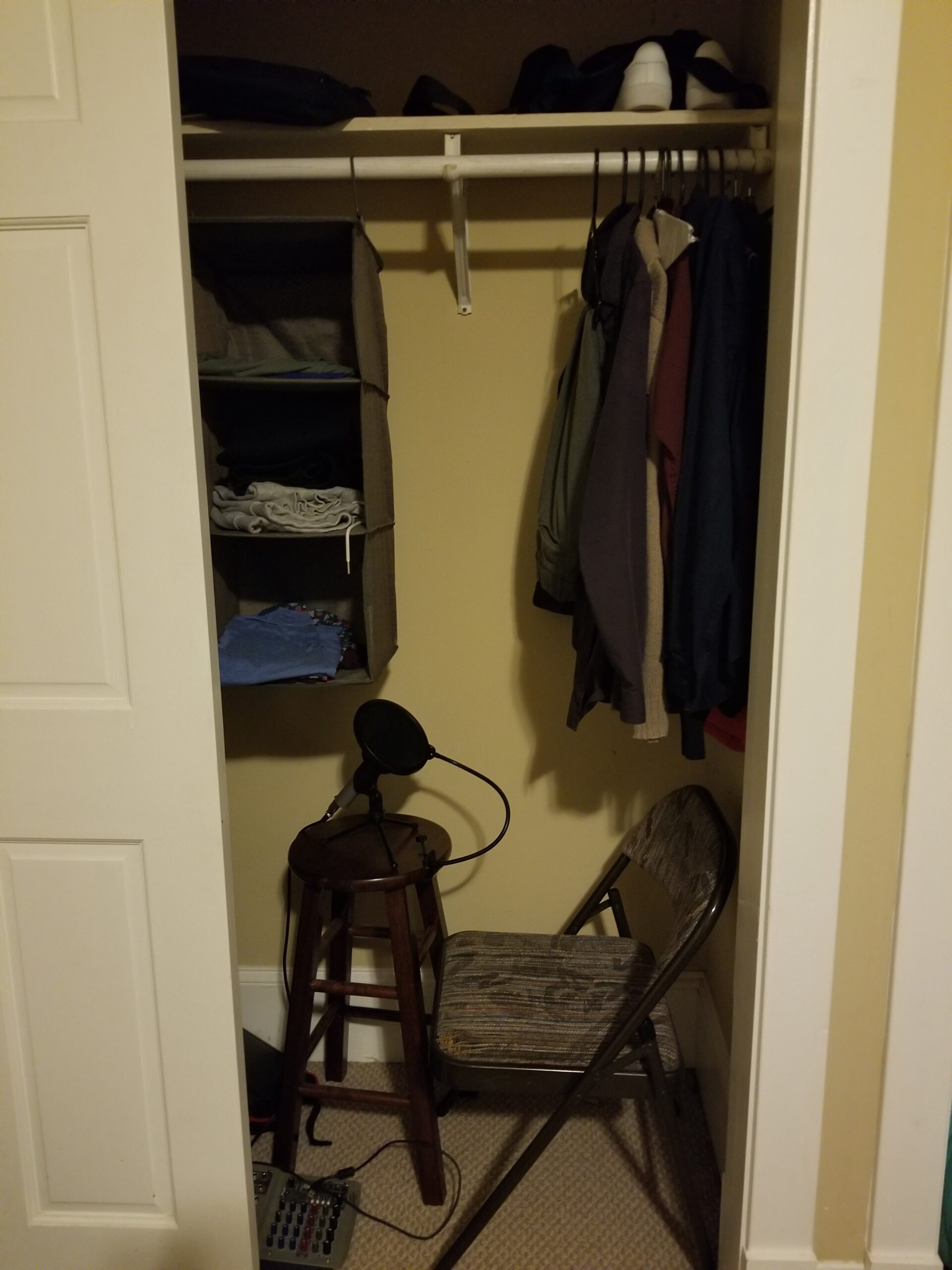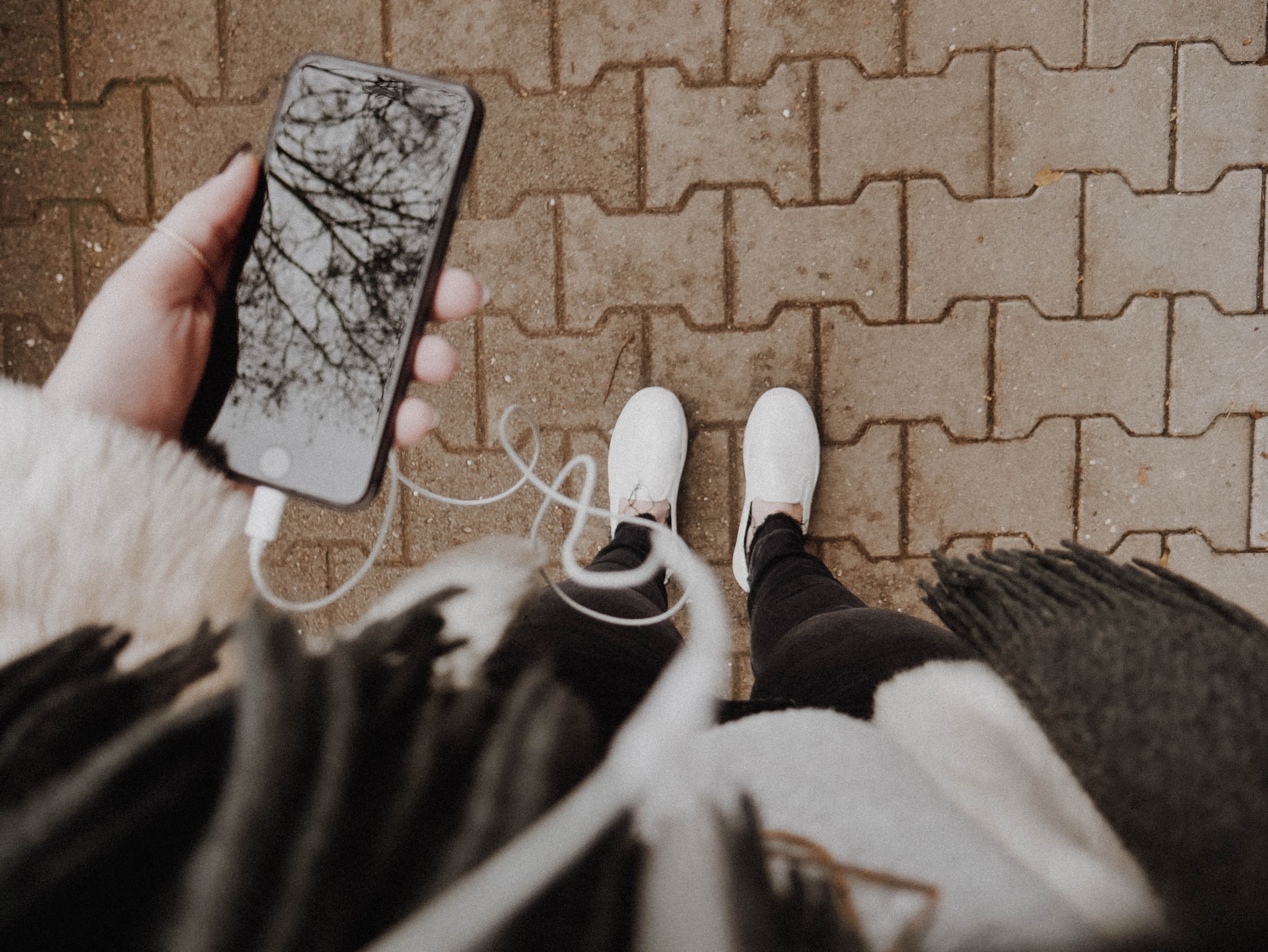First and foremost with recording a podcast, is having some way of recording what you have to say. Seems like a no-brainer but you need a microphone.
The good news is, you already have one. The bad news is, it’s not that great. However, the best microphone in the world is the one you have on you. So, open up your phone, head on over to the voice memo app and record yourself.
What I’m illustrating here is that you can get started with what you have at hand, all of the tools are available to you, and sometimes getting started is the hardest part. Recording on your phone with the built in microphone will not give you the best audio, but you will have overcome inertia.
What do you need?
- A microphone
- A device to record your voice onto
- A program or app to edit the audio
- A quiet space to record
This is the bare bones gear of what you need to be able to record a podcast episode. However, to really enhance your audio quality you’ll want to add a few other pieces into the mix.
- A pop filter for your microphone
- Acoustic treatment for the room
- Some good headphones/speakers for playback and editing
Why do you need these things?
Aside from the obvious things like a microphone and a device to record to, having a quiet space to record in means you’ll have less to deal with in the edit. Nothing worse than having a chainsaw start up through a crucial moment in the recording.
Pop Filter
What does a pop filter do, and why do you need one? Well it does a couple of things but primarily it breaks up the air pressure from ‘plosives‘, often words with ‘p’ in them – eg: pop, people, paint which ends up causing the microphone to overload and it can ruin the audio.
They’re not expensive, and yet they can add an extra layer of production quality to any recording.
Acoustic Treatment
Before you go and start thinking of hoarding egg cartons, don’t. That’s not what we’re talking about here. Sure, if you’ve got the budget to kit out a spare room in your house with acoustic foam and sound seals, then go right ahead. What we’re talking about here is breaking up the hard surfaces in your room with soft things – things that will absorb sound rather than reflect it back at you.
- Bookshelves with the books turned so the pages are facing out
- Blankets hung on walls
- Closets full of heavy coats
- Making essentially a blanket fort for recording in.
Here’s a couple of examples from Redditors belbivfreeordie (left) and IcicleDisaster (right) that highlight the sort of acoustic treatment you’re potentially looking at. Bearing in mind, we’re talking getting started here, you’re not going to be interviewing guests from a blanket fort or your closet. Always have a plan to grow your setup as your podcast grows.


Headphones/Speakers
A pair of good comfortable headphones or some quality speakers will go a long way to helping you identify issues in your recording and be able to fix them before releasing an episode. If you’re editing or listening on tiny earbuds, you may miss something that otherwise would’ve been picked up with bigger headphones or desk speakers. You might miss it, but some listeners will hear it.
Recording Devices
Having something to record to can be broken down into three broad categories.
A computer, a mobile device or an external recorder.
Recording to your desktop or laptop computer, usually into the program you’re going to edit in can save you a lot of time and hassle in the long run. There can be a few gotchas though, like unwanted fan noise sneaking into your recording or a notification going off mid recording. All in all though, it’s a great option.
Much like the computer option, using a mobile device with either an internal or external microphone can be a great all in one solution, there as a number of great apps out there that allow you to record and edit in one. Alternatively, using a mobile device purely for capture is perfectly doable and there are a number of great apps out there that support that.
Lastly, an external recorder, this will be just a capture device and the audio files will need to be edited in another program. Often these can be pricey but they are also a dedicated device and definitely a future-proof investment.
This isn’t an exhaustive guide, this is to help you get your toes in the water and show you that podcasting is very accessible without a fully kitted recording studio. We will go over some of the content mentioned here in more detail later.
Do reach out, we’re here to help.

Nice, thank you.